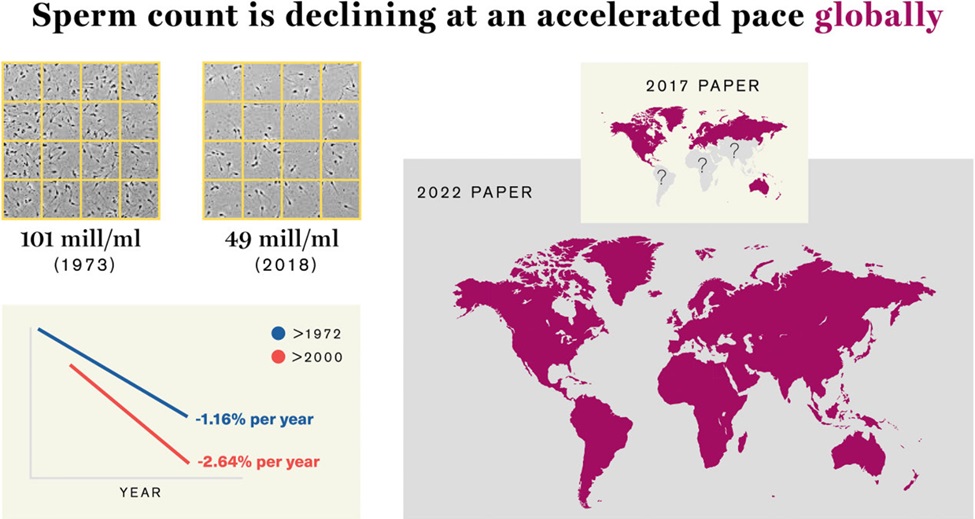
The last few decades have seen a worrying trend in global research on men’s reproductive health. Scientists say that with the the trends continuing widespread infertility will occur in the following decades. Global sperm counts have declined while testosterone levels also declined by 1 percent year since the 1980s. Sperm counts decreased by 62{91af1cbfef84ba2a0098bebf5a0d5c48352b6bada9cc9029387afcb2bcbae111} between 1973 and 2018. Natural conception may become uncommon. So the countryside desolate within 20 to 40 years if these rates are sustained.
Unpacking Predictions: Future Outlook
The alarming fall in sperm count and testosterone levels has made researchers resort to AI for the prediction of future events. According to AI estimates, if the average sperm counts, which were 49 million per milliliter in 2024, continue to fall, mankind might face a reproductive crisis by the middle of the century. Concentration of sperm—the number of sperm per milliliter—has also decreased. It was 101 million in 1973 to 49 million in 2018. Concentrations below 40 million per milliliter can lead to damage to fertility, meaning many men might be at risk, say experts.
Environmental and lifestyle factors cause decline
Various environmental, lifestyle, and other factors might be lowering the sperm and testosterone levels. Microplastics, which release endocrine disruptors like phthalates, are increasing in number. Many consumer products contain chemicals that adversely affect sperm and testosterone production. Studies have shown that using a smartphone daily may lower the concentration of sperm. Other causes that have contributed to this problem are pesticides, environmental pollutants, bad diets, and inactive lifestyles, which are harming male reproductive health.
Impacts on fertility and stability of the population worldwide
Declining sperm and testosterone levels pose a threat not just to individual fertility but to the stability of world populations as well. A decreasing rate of male fertility will probably make it more challenging to conceive, push higher the rates of infertility, and even change the population’s demographics. This means there may be aging populations with fewer younger generations who could support them. Thus, that would be economically and socially burdensome. There might be an increased expense on assisted reproductive technologies in healthcare systems, thereby causing hardship to couples attempting to reproduce. In the long run, this may fundamentally alter the face of human civilization.
Emergency Action: What to Do
According to experts, the reasons for falling male fertility must be addressed immediately. Top urologist Dr. John Smith says, “The continuous decline in sperm count is a public health crisis that demands immediate attention.” Increasing environmental restrictions to prevent endocrine disruptor exposure, encouraging healthier lifestyles, and educating the public about smartphone usage concerns are needed to solve this situation. Policymakers, practitioners, and the community as a whole should form alliances to reverse this trend that is preserving natural conception in the future.






